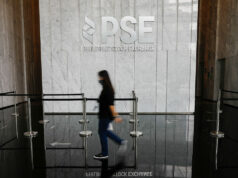Remittance inflows likely to pick up ‘modestly’ this year

By Beatrice M. Laforga, Reporter
THE PHILIPPINES received more than $35 billion in remittances in 2020 — the second biggest in the East Asia and Pacific region last year despite the global health crisis, according to the World Bank.
The World Bank expects remittance inflows to the region to pick up “modestly” this year on the expected economic rebound of major host countries.
In its “COVID-19 Crisis Through a Migration Lens” report released on Wednesday evening, the World Bank said the Philippines had the second-largest remittance inflows in East Asia and the Pacific, as overseas Filipino workers (OFWs) continued to send money home amid the pandemic. China had the biggest remittance inflows in the region with $59.5 billion.
Among low- and middle-income economies, the Philippines was the fourth-biggest remittance recipient, behind Mexico’s $43 billion, China and India’s $83 billion.
As a percentage of their economies, the Philippines ranked fourth in East Asia and the Pacific, with remittances accounting for 9.6% of its gross domestic product (GDP), following the 13.2% share in Marshall Islands, 18.7% in Samoa and 37.7% in Tonga.
Remittances to the Philippines fell by 0.8% last year, softer than expected given the extent of the pandemic’s impact on the global economy and labor market.
The World Bank said this was due to the sustained high inflows from the United States, which accounted for 40% of the 2020 total. This offset the reduced inflows from Middle East countries, where there is a lack of safety nets for migrant workers. Many OFWs were also repatriated after losing their jobs.
“Foremost among the drivers of remittance flows and reasons behind their resilience during the crisis was migrants’ desire to help their families, to send money home by cutting consumption or drawing on savings,” the World Bank said.
Fiscal stimulus in host countries, more inflows coursed through formal channels and the cyclical movements in oil prices and currency exchange rates also helped remittances remain resilient in 2020.
“[For East Asia and the Pacific], a modest growth of about 2.1% is expected in 2021–22 due to recovery anticipated in major host economies such as Saudi Arabia, the US and the United Arab Emirates,” the multilateral bank said.
It projected remittances to the region to increase to $553 billion by year’s end from last year’s $540 billion, before rising further to $565 billion. If realized, this means remittances will be going back to its pre-crisis level this year, or near 2019’s $548 billion.
The Bangko Sentral ng Pilipinas expects remittance inflows to the Philippines to grow by 4% this year after last year’s slump.
Latest data showed overseas Filipinos’ cash remittances rose by 5.1% to $2.477 billion in February from $2.358 billion a year ago, ending two straight months of decline.
Still, remittance costs to the Philippines remained among the lowest in East Asia and the Pacific, averaging at 3% in the fourth quarter of last year, below the region’s 6.86% average.
A major factor that dampened OFW remittances last year was the temporary deployment ban enforced by the government to limit the number of nurses leaving the Philippines, the World Bank said.
The deployment of OFWs fell by up to 75% in 2020, it said citing preliminary official estimates.
More than 390,000 OFWs have returned home from 90 countries and 150 ships as of mid-March due to the pandemic, based on data from the Department of Foreign Affairs.
The government spent close to $70 million to help OFWs, which included cash handouts, educational aid for their children and repatriation.
Tax incentives have proven to be effective in attracting remittances as observed in Bangladesh and Pakistan. Compared with the trend of remittance flows in the Philippines where the tax perk was absent, the World Bank noted that inflows in Bangladesh and Pakistan surged ahead starting July 2020 after the two countries introduced these measures.
“Tax incentives may continue to keep the level of remittances high in 2021, but it is not clear how long these measures would accelerate their growth rate,” it said.



